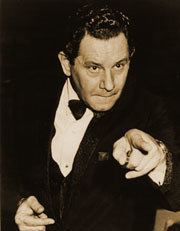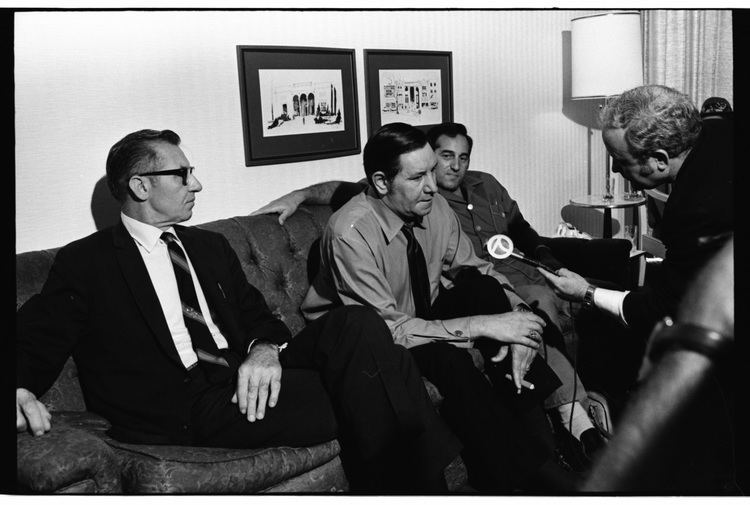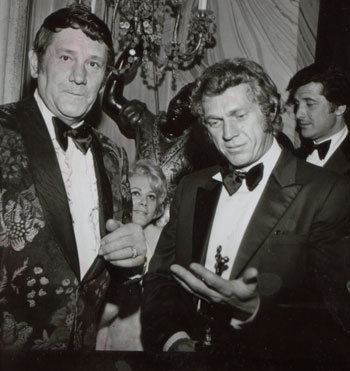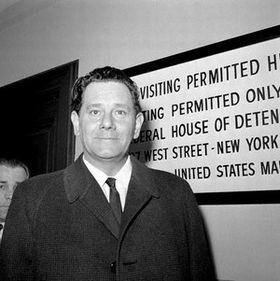Name Peter Hurkos | Role Entertainer | |
 | ||
Spouse Stephany Hurkos (m. ?–1988) Children Gloria Hurkos, Peter Van der Hurk People also search for Stephany Hurkos, Gloria Hurkos, Peter Van der Hurk | ||
PETER HURKOS on Open Mind With Bill Jenkins (part 1c) (audio only)
PETER HURKOS on Open Mind With Bill Jenkins (audio only) (part 1a)
Peter Hurkos (born Pieter van der Hurk on 21 May 1911 in Dordrecht, the Netherlands; died 1 June 1988 in Los Angeles, California) was a Dutchman who allegedly manifested extrasensory perception (ESP) after recovering from a head injury and coma caused by a fall from a ladder when aged 30. During World War II, he was a member of the Dutch Resistance and was imprisoned in Buchenwald. With the help of businessman Henry Belk and parapsychologist Andrija Puharich, Hurkos became a popular entertainer known for performing psychic feats before live and television audiences.
Contents
- PETER HURKOS on Open Mind With Bill Jenkins part 1c audio only
- PETER HURKOS on Open Mind With Bill Jenkins audio only part 1a
- Testing and analysis
- Refuted claims
- Popularization
- References

Testing and analysis

Hurkos stated in a 1960 episode of the television series One Step Beyond, after giving a lecture at Massachusetts Institute of Technology to a scientific panel, that he would participate with any scientific experiment under any circumstances. However, author and stage magician James Randi contends that Hurkos refused to allow his skill to be tested by scientists except for one session with the parapsychologist Charles Tart of the University of California, Davis. Dr. Tart's tests were negative. Randi commented "If Tart can't find such powers, they certainly aren't there!".

The parapsychologist Andrija Puharich was impressed by the stories about Hurkos and invited him to the USA during 1956 to investigate his alleged psychic abilities. Hurkos was studied at Puharich’s Glen Cove, Maine, medical research laboratory with what Dr. Puharich considered to be controlled conditions. The results convinced Puharich that Hurkos had genuine psychic abilities. However the experiments were not repeated by other scientists and Puharich was described as a "credulous investigator". Raymond Buckland has written "with the exception of Dr. Andrija Puharich, not a single recognized psychic investigator has been impressed with Hurkos's performances."

During his early career as a psychic entertainer, Hurkos purported that he employed his psychic powers to discern details of audience members' private lives that he could not otherwise have known. However, the psychologist Ronald Schwartz wrote in the magazine Skeptical Inquirer that Hurkos used cold reading methods and published a transcription of such a reading in their autumn 1978 issue.
Hurkos: I see an operation.Subject: [no response].Hurkos: Long time ago.Subject: No. We have been lucky.Hurkos: [somewhat angrily] Think! When you were a little girl. I see worried parents, and doctor, and scurrying about.Subject: [no response]Hurkos: [confidently] Long time ago.Subject: [yielding] I cannot remember for certain. Maybe you are right. I'm not sure.James Randi analyzed this and other transcripts of Hurkos performances and professed to have identified a number of standard cold reading techniques. For example, Hurkos might begin with something seemingly personal but actually quite common: a surgery. Hurkos would not specify that the subject underwent surgery—it could be any recent surgery of personal relevance to the subject. If this method failed, Randi maintains, Hurkos would qualify the statement with the phrase "long time ago." At this point, any operation to any family member or friend in the subjects's own life would have seemed psychic because an operation is thought of as a private matter. Randi adds that the tone in Hurkos's voice was also significant: Hurkos presented himself as confident and knowing and characterized the subject as obstinate.
Other common techniques included guessing numbers of people in families (easy enough if one picks a typical number and allows himself to add frequent visitors or exclude family members who have relocated away from home as needed to match the target, as Hurkos did), including nonsense words in his presentation that could be interpreted by the subject to have any one of many meanings, and guessing on the importance of common names, which could be permutated as needed. (He most commonly used the name "Ann," which would give him a success with anybody who had a relative or friend or teacher or boss or co-worker named Ann, Anna, Anastasia, etc., at any time in his or her life.)
Refuted claims
Hurkos and his endorsers maintained that he was a great psychic detective. By 1969, he cited the successful solution of 27 murder cases in 17 countries. However, in some cases the detectives assigned to these cases countered that Hurkos contributed no information unobtainable from newspapers and, in some cases, that he had no part in the investigations whatsoever. In response to Hurkos's claim that he located the stolen "Stone of Scone," Home Secretary Chuter Ede declared:
The gentleman in question whose activities have been publicized (though not by the police) was among a number of persons authorized to come to Westminster Abbey to examine the scene of the crime. He was not invited by the police, his expenses have not been refunded by the Government, and he did not obtain any result whatsoever.
Hurkos made notable errors such as claiming Adolf Hitler was alive and living in Argentina and that an innocent suspect was the Boston Strangler. Hurkos was put on trial on the charge of impersonating a federal agent, found guilty, and fined $1,000. Hurkos posed as the police officer in order to gather information that he could later claim to be psychic revelations.
In the case of murderer John Norman Collins, he sometimes claimed the killer was blond and at other times brown-haired so that he could claim victory either way. He made other claims about the killer that were simply wrong. He claimed to have identified Charles Manson to police, but this was not true; Manson was identified by his devotee Susan Atkins to a cellmate while she was in jail for a different crime. In fact, Hurkos had been to the Tate residence to do a "reading," but his guesses, including descriptions of how the "killings erupted during a black magic ritual known as 'goona goona,'" were inaccurate.
The magician Milbourne Christopher in his book Mediums, Mystics and the Occult documented the errors Hurkos had made.
Authors Arthur Lyons and Marcello Truzzi Ph.D., also a founder of the International Remote Viewing Association, wrote the Hurkos cases were "pure bunk" in their 1991 book The Blue Sense: Psychic Detectives and Crime.
Popularization
Despite refutations, Hurkos remained famous. He has had several successful television specials, including:
A story about Hurkos' alleged psychic powers entitled "The Man With The X-Ray Mind" appears in Frank Edwards' book "Stranger Than Science" (Citadel)
Numerous periodicals reported Hurkos's exploits throughout his lifetime: Time, Newsweek, Omni, Life, True, Reader's Digest, Playboy, The National Enquirer, Ladies Home Journal, et al. Hurkos himself published three books: Psychic (Bobbs-Merrill), The Psychic World of Peter Hurkos, (Doubleday), and Peter Hurkos: I Have Many Lives (Doubleday). Various authors have described and examined various details of Hurkos's life and alleged ESP in more than 75 published books.
He also appeared in several motion pictures as himself, including The Amazing World of Psychic Phenomena (Sunn International), The Mysterious Monsters (David Wolper), and Now I Lay Me Down to Sleep (Paramount). George Voskovec portrayed Hurkos in The Boston Strangler, the 1968 movie adaptation of Gerold Frank's 1966 book of the same name. His life may also have been the basis for the Stephen King novel The Dead Zone.
At the time of his death, Peter Hurkos resided in Studio City, Los Angeles. He failed to predict accurately the date of his own death: Although he prophesied that he would die on 17 November 1961, he did not die until 1 June 1988, at Cedars-Sinai Hospital in West Hollywood, California. He had previous children from his first marriage, a daughter from his second marriage (Carola Van der Hurk KNA Carol Donovan who lives in Lebanon, Ohio) and a daughter from his third marriage, Gloria who resides in San Diego, California.
